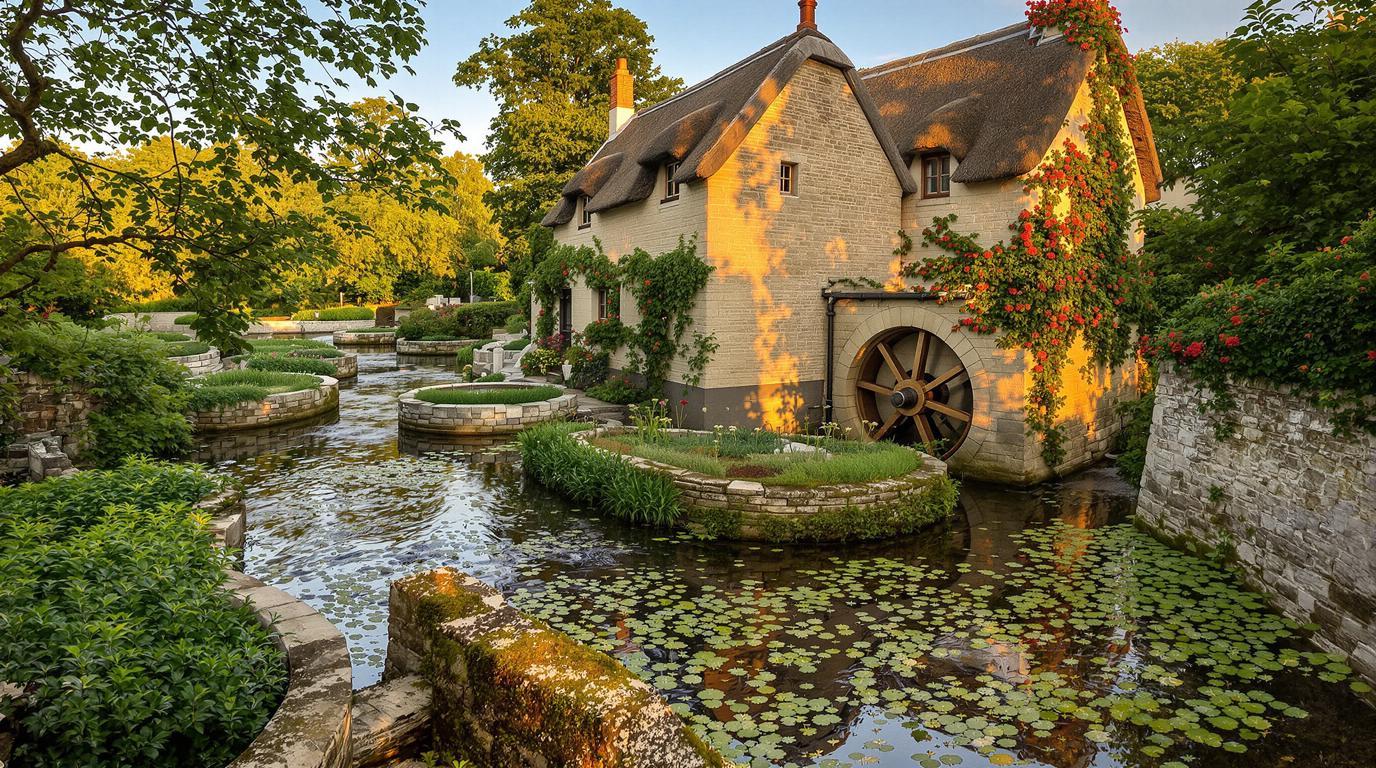France’s shortest river flows through a storybook village that most American travelers have never heard of. At just 1.1 kilometers long, the Veules River winds through a Norman coastal gem where watermills still turn, thatched cottages bloom with roses, and the scent of fresh oysters fills the sea air.
A picturesque paradise where France’s shortest river meets the sea
Veules-les-Roses sits nestled along Normandy’s dramatic Alabaster Coast, officially recognized as one of “The Most Beautiful Villages of France.” Unlike the tourist-packed Mont Saint-Michel or the D-Day beaches, this hidden treasure offers a pristine glimpse into authentic Norman life that feels suspended in time.
The village’s name itself tells a story—”Veules” comes from the tiny river, while “les-Roses” honors the wild roses that cascade from cottage walls and garden fences throughout summer months.
Four ancient watermills that reveal 1,000 years of Norman ingenuity
Along the river’s surprisingly short journey from spring to sea, four historic watermills stand as testament to medieval engineering. These moss-covered stone structures once ground grain for the entire region. Today, they create perfect photo opportunities as their wooden wheels continue turning in crystal-clear waters.
“Our mills tell the story of Normandy better than any history book,” explains Marie Dupont, a local historian. “Each one represents centuries of village life centered around water and wheat.”
The beach that transforms twice daily with dramatic tides
At the river’s mouth lies a beach that undergoes a remarkable transformation with each tide cycle. During low tide, golden sand stretches toward horizon-bound chalk cliffs. As waters rise, pebbles dominate the shoreline, creating a meditative soundtrack as waves roll across them.
The dramatic white cliffs mirror those found across the Channel in Dover, making this coastline feel both familiar and exotic to American visitors. For perspective-shifting views, climb the cliff path at sunset when the limestone burns orange and pink.
Watercress beds where Norman culinary traditions spring to life
Perhaps most surprising are the emerald-green watercress beds lining the river. For centuries, families have cultivated this peppery herb in shallow stone basins fed by the Veules’ pure waters. These cressonnières produce some of France’s most prized watercress, which appears on menus throughout Normandy.
“My grandfather taught me to harvest cress when I was just six years old,” shares Jean-Claude Bauder, a third-generation watercress farmer. “The river’s constant temperature creates perfect conditions year-round. You cannot find watercress this sweet-yet-spicy anywhere else in France.”
A church where mermaids swim alongside biblical figures
The 12th-century Saint-Martin Church stands tall in the village center, but what makes it extraordinary are the nautical-themed sandstone carvings inside. Maritime legends like mermaids and sea creatures appear alongside traditional religious iconography, reflecting the village’s deep connection to the ocean.
The church’s 17th-century organ still plays during special celebrations, filling the ancient space with music that has echoed through these walls for centuries. If you’re fortunate enough to visit during a concert, the experience rivals attending performances in Japan’s most historic temples.
Artisanal workshops preserving ancient Norman crafts
The village embraces its artistic heritage with studios like Atelier2 and AtelieRoba showcasing coastal-inspired pottery and paintings. Most unique is La Balaiterie, where the nearly forgotten tradition of straw broom making continues in a workshop that welcomes curious visitors.
These artisanal spaces offer authentic souvenirs far more meaningful than mass-produced trinkets found in touristy coastal towns. The ethereal quality of local art recalls the misty landscapes of mystical forests that inspired fantastical movies.
Seafood feasts where oysters journey from ocean to plate in hours
Restaurants like Les Galets and La Marine serve seafood harvested mere hours before appearing on your plate. Fresh oysters—briny, sweet and requiring nothing more than a squeeze of lemon—steal the show at most establishments. For the full experience, pair them with local Norman cider served in traditional ceramic cups.
The coastal dining scene here rivals Norway’s most picturesque fishing villages, but with a distinctly French attention to culinary detail.
The golden hour phenomenon that bathes everything in amber light
Visit during summer evenings when the setting sun transforms Veules-les-Roses into a canvas of golden light. The warm glow illuminates half-timbered façades and creates long shadows across cobblestone streets. This natural light show rivals the famous rose-gold alpine sunsets found in mountain regions.
For photographers, position yourself where the river meets the sea around 8 PM from June through August to capture this magical interplay of light, water, and ancient architecture.
A perfect day trip from Paris unknown to most tourists
Just two hours from Paris by car, Veules-les-Roses offers a perfect escape from urban exploration. Most Americans focused on the capital city never discover this coastal gem, missing a chance to experience authentic Norman village life that feels worlds away from tourist crowds.
Like Paris’s hidden botanical gardens, this village provides a peaceful counterpoint to better-known destinations. Visit midweek in May or September to have the picture-perfect streets almost entirely to yourself.
